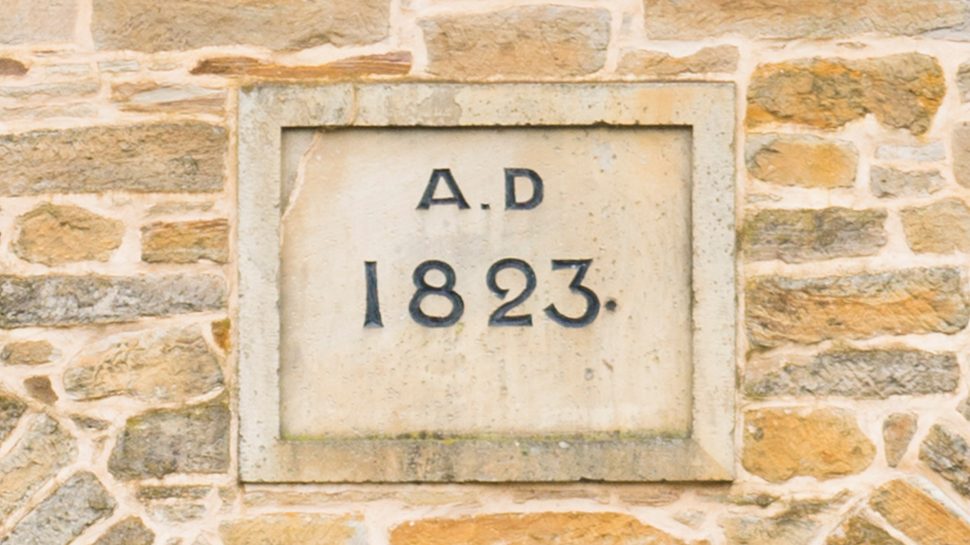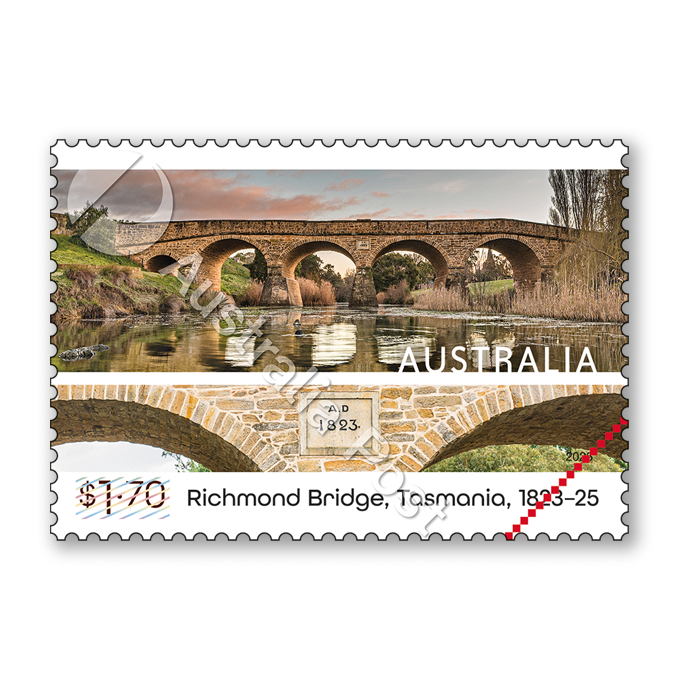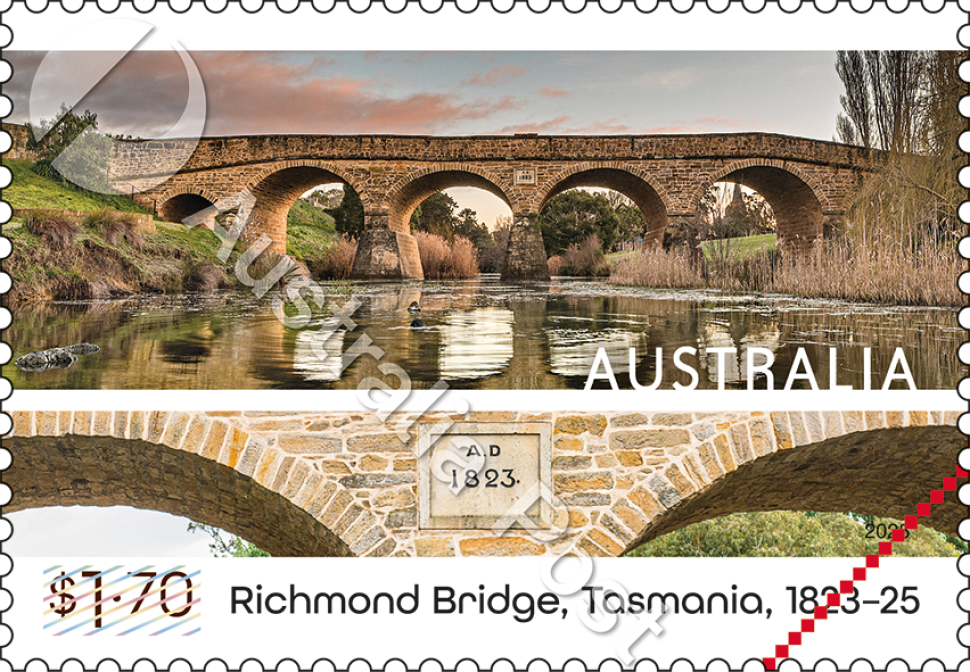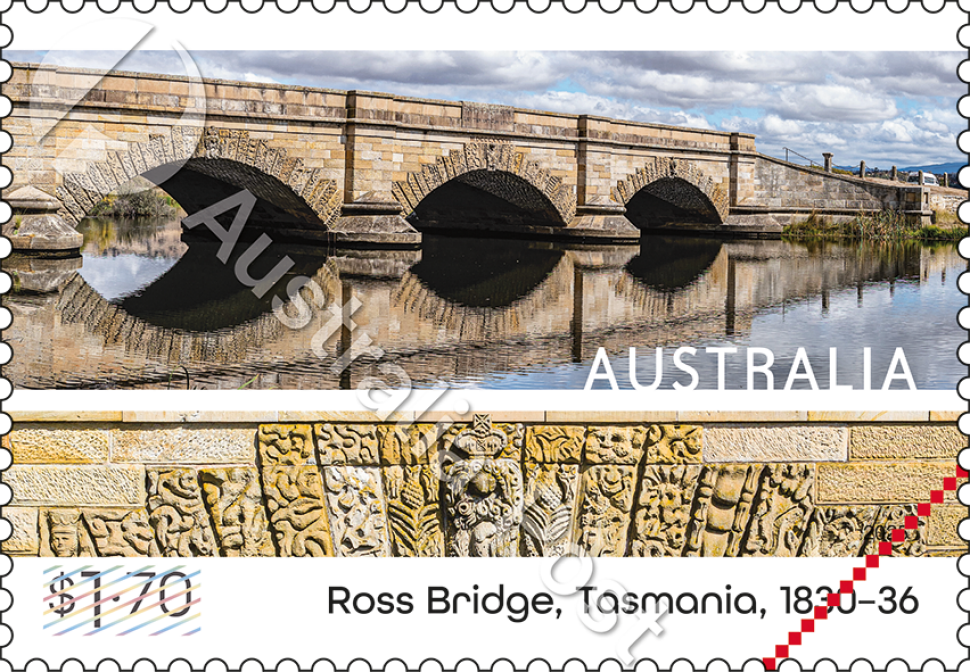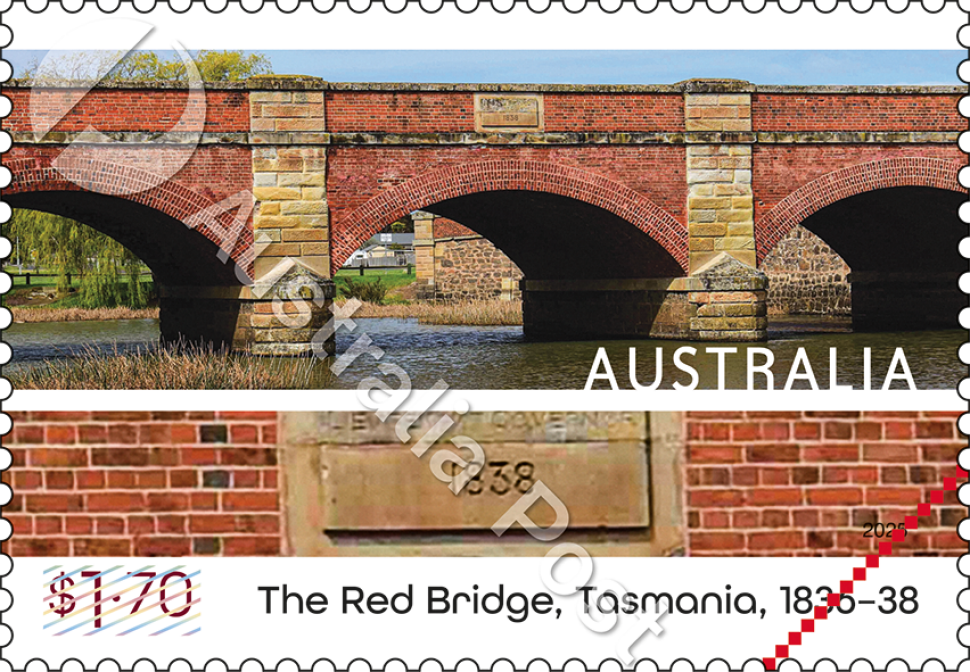Overview
From 1804 to 1853, around 76,000 convicts were forcibly transported to Van Diemen’s Land, as Tasmania was then called. This represented 47 per cent of all felons sent to the Australian colonies. Male convicts were set to work under harsh, punishing conditions, quarrying and hauling stone to construct roads, buildings and bridges.
This issue features three beautiful and historically significant convict-built Tasmanian bridges from this period.
Technical specifications
- Issue date
- 14 October 2025
- Issue withdrawal date
- 1 May 2026
- Denomination
- 3 x $1.70
- Stamp & product design
- Simone Sakinofsky, Australia Post Design Studio
- Paper: gummed
- Tullis Russell 104gsm Red Phosphor/Blue PVA Stamp Paper
- Paper: self-adhesive
- S/A Tullis Russell 104gsm Red Phosphor PSA (P55) 100gsm Release
- Printer: gummed
- Southern Impact
- Printer: self-adhesive
- RA Printing
- Printing process
- Offset lithography
- Stamp size (mm)
- 26 x 37.5
- Minisheet size (mm)
- 135 x 80
- Perforations (mm)
- 14.6 x 13.86
- Sheet layout
- Module of 50 (2 x 25)
- FDI postmark
- Hobart, Tas 7000
- FDI withdrawal date
- 12 November 2025
$1.70 Richmond Bridge, Tasmania
Constructed from locally quarried sandstone, Richmond Bridge (1823–1825) crosses the Coal River at the town of Richmond, 25 kilometres north of Hobart. Consisting of four main arches, it is the oldest surviving stone span bridge in Australia. The sandstone blocks were quarried from nearby Butcher’s Hill and hauled to the construction site by convicts using hand carts. In 2005, Richmond Bridge was added to the Australian National Heritage List.
$1.70 Ross Bridge, Tasmania
Australia’s third oldest bridge, the three-arched sandstone Ross Bridge (1830–1836) spans the Macquarie River at Ross in the Midlands of the state. The sandstone was quarried locally and was ground and cut by convict chain gangs. The bridge is remarkable for its decoration on both sides with 186 extraordinary convict-made narrative relief carvings, many of which are satirical, obscene and anti-authoritarian. Completed between May 1835 and July 1836, the carvings represent foliage, human heads, animals, insects, emblems, sexual allusions and political satire, such as a portrait of Queen Caroline of Brunswick with the face of a rat.
$1.70 The Red Bridge, Tasmania
Also in the Midlands, the Red Bridge (1836–1838) crosses the Elizabeth River at Campbell Town on the Midland Highway. The three-arch span bridge is constructed from 1.5 million convict-made clay brick arches and parapets, with cut and dressed sandstone piers. Work on the bridge was carried out by convict chain gangs with preference given to the more willing and skilled labourers. The Red Bridge is the oldest surviving brick arch bridge in Australia. The bridge’s longevity is a testament to the skill of its convict builders; it has been in continuous use since 1838 and carries more than two million vehicles every year.
